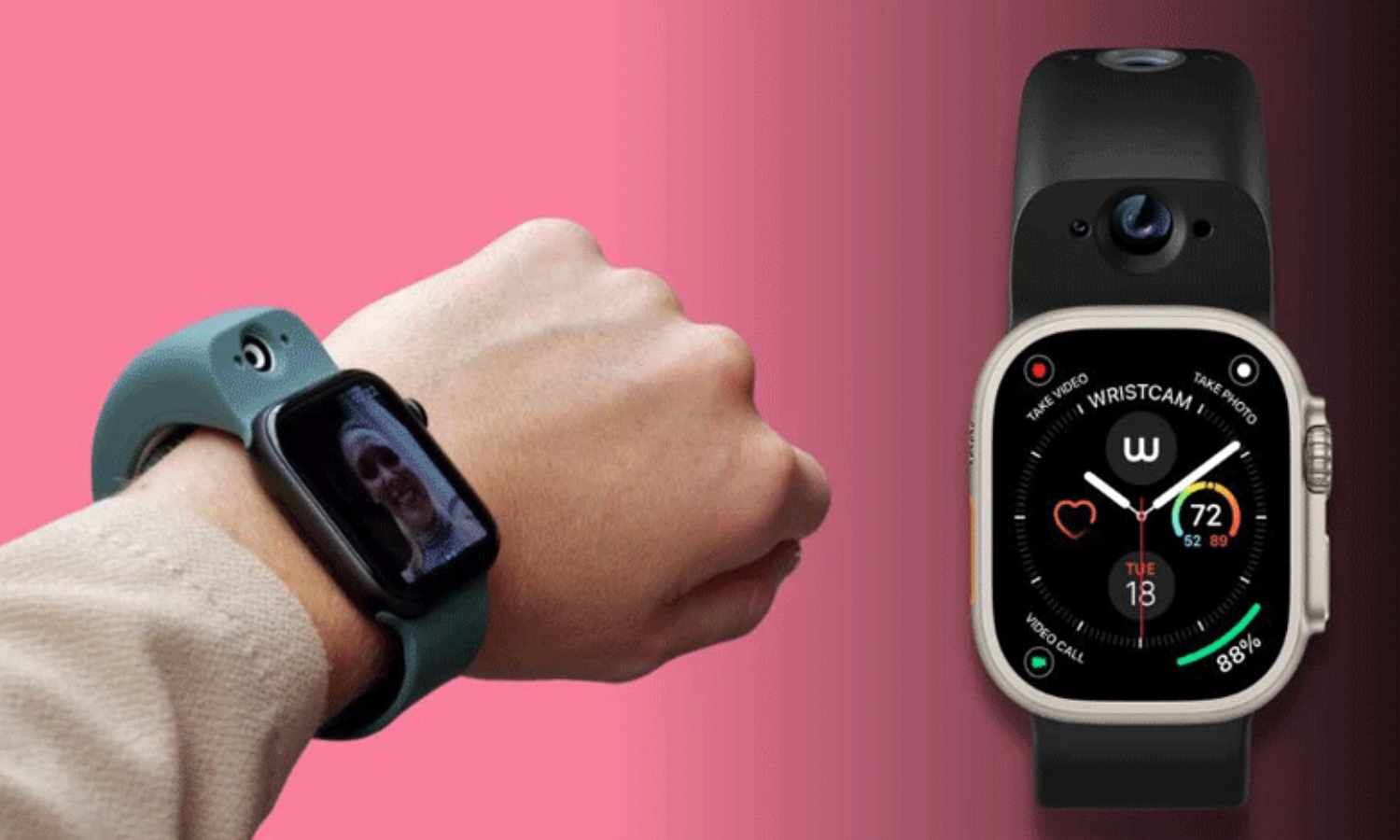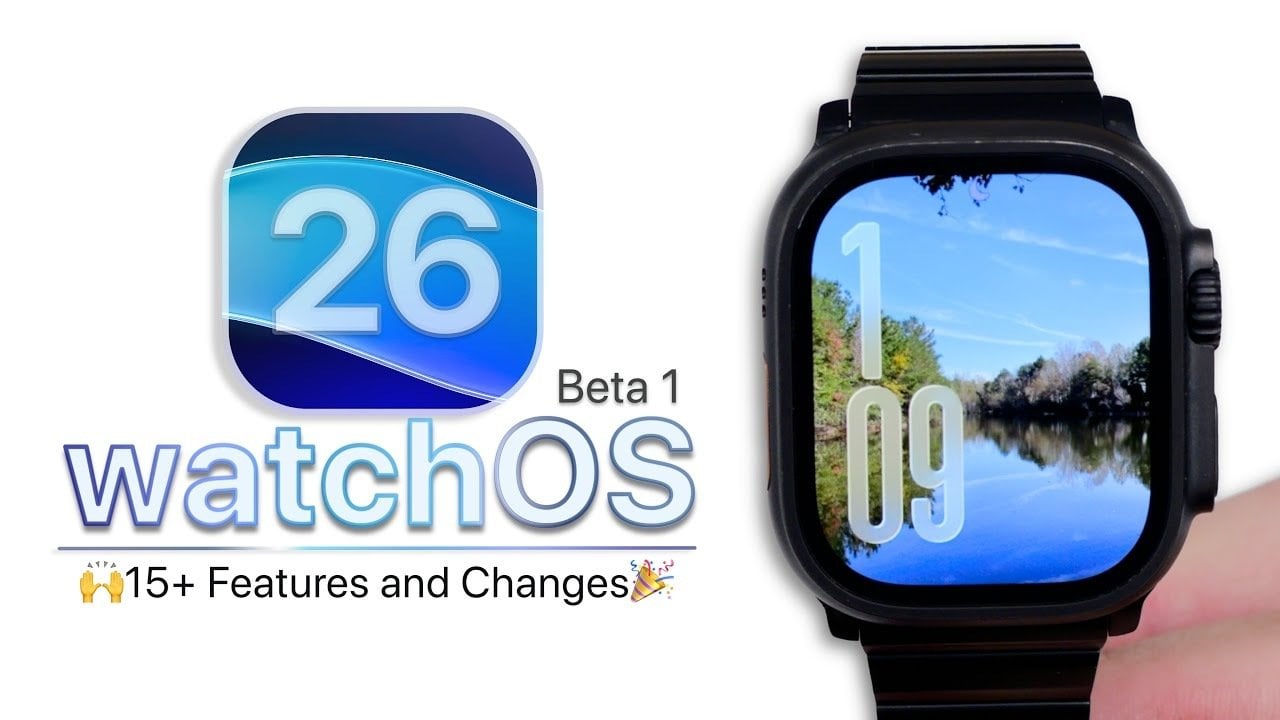Technology
Sporttrade Seeks CFTC Approval to Avoid ‘Irreparable Harm’ by Kalshi
Sporttrade, a sports prediction market platform operating with state gaming licenses, has petitioned the Commodity Futures Trading Commission (CFTC) with a letter asking permission to offer its product nationwide so it can avoid the “irreparable harm” of a competitive disadvantage. CEO Alex Kane is not worried the April 25 letter will upset Sporttrade’s state regulators […]

Sporttrade, a sports prediction market platform operating with state gaming licenses, has petitioned the Commodity Futures Trading Commission (CFTC) with a letter asking permission to offer its product nationwide so it can avoid the “irreparable harm” of a competitive disadvantage.
CEO Alex Kane is not worried the April 25 letter will upset Sporttrade’s state regulators even as multiple states accuse Kalshi, a sports prediction market competitor, of inappropriately using the Commodity Exchange Act as cover for a thinly disguised form of sports betting.
“I haven’t feared [retaliation] for a second,” Kane said in a phone interview. “I know our regulators well.”
The company’s federal outreach following a monthslong internal risk assessment could encourage sportsbook giants such as DraftKings, which is enticed by prediction markets but concerned about state blowback, that they are safe to proceed, too.
Sporttrade is in a unique position because it offers sports futures event trading but is currently regulated like a traditional sportsbook in the five states where it operates (Arizona, Colorado, Iowa, New Jersey and Virginia).
Kalshi’s presence in all 50 states is enough of a long-term threat to Sporttrade’s market share that the company must change its approach right now in order to survive, Kane wrote in his letter to the CFTC. He said he hopes state officials he has built a relationship with sympathize with that predicament.
Kane’s letter notifies the CFTC that Sporttrade is “preparing a formal no-action relief request” to “accept trades on event contracts without formal federal registration.”
Kalshi, founded in 2018, has promoted the idea that its platform is a case of technological advancement that must be embraced by regulators. “No important financial innovation has ever been created without critics,” CEO Tarek Mansour wrote on social media in March.
But the firm, which began offering a platter of sports contracts for the first time this year, is not creating a fresh financial vehicle; Sporttrade was founded in 2017, and internationally, sports prediction exchanges such as Betfair have existed for decades.
Kalshi’s novelty dwells in the bold approach it is taking toward U.S. regulators, refusing to shut down upon request and in some cases suing the groups that aim to close it. By contrast, other companies have backtracked at first asking. Kalshi has also cultivated key political allies, including its board member Brian Quintenz, now the nominee to chair the CFTC, and advisor Donald Trump Jr., the son of President Donald Trump.
Kane complimented Kalshi’s platform and industry influence. He also said his company wants a level playing field so it can show it is just as cutting edge.
“It’s identical,” Kane said of Sporttrade’s level of fintech innovation compared to Kalshi. “Exact same thing, right?”
Several exchanges, including ErisX in 2021, tried and failed to go the federal route with sports futures trading under previous CFTC leadership. Rather than fight back, they acquiesced to agency resistance.
Sports economist and Syracuse University professor Rodney Paul said discussions about the possibility of sports-related prediction markets taking root in the U.S. have been going on at least since he first started going to conferences with finance researchers to discuss gambling in the early 2000s.
“Wow, it’s got to be 20 years,” Paul said in a video interview of when he first heard about the concept sports futures trading in the U.S. “I thought it was just kind of worded differently to be able to get around the negative connotation of saying it’s about gambling. … Once people figure out some sort of financial market, then they always figure out interesting derivatives.”
Kalshi has argued that its sports contracts are not a form of betting like Paul suggested. The company’s attorneys say its differences from sportsbooks are one of the reasons it should be overseen exclusively by the CFTC.
Sporttrade strikes a different tone, given its close work with state gaming regulators.
“You’re not going to hear me say this isn’t sports betting,” Kane said. “That’s a ridiculous comment.”
Still, Kane sees value in working with the CFTC if it fosters competition among prediction market platforms, which he believes are more consumer friendly than traditional sportsbooks in part because they can offer better potential returns and also because they do not limit user activity for winning too often.
Kane said he envisions a world in which state regulators maintain some influence over sports event futures contracts even with the CFTC involved. For Sporttrade to still be standing in that scenario, though, the executive believes the company must gain national reach during what his letter calls “the current uncertainty regarding even the medium-term outlook for sports event contracts.”
Expedited CFTC approval for Sporttrade, Kane added, would “encourage an open and fair capacity to offer sports event contracts, giving consumers choice among like options that all provide safe, regulated and compliant experience.”
The CFTC declined to comment on this story while Kalshi did not respond to requests for comment.
(This story has been updated in the final paragraph after the CTFC declined to comment.)
Technology
Is this the end of the road for connected fitness equipment?
When you buy through links on our articles, Future and its syndication partners may earn a commission. Credit: JAXJOX Once hailed as the future of home workouts, connected fitness equipment is facing a serious identity crisis, and in some cases, a full-blown shutdown. The latest casualty? JaxJox, the smart home fitness brand that promised a […]

When you buy through links on our articles, Future and its syndication partners may earn a commission.

Credit: JAXJOX
Once hailed as the future of home workouts, connected fitness equipment is facing a serious identity crisis, and in some cases, a full-blown shutdown.
The latest casualty? JaxJox, the smart home fitness brand that promised a revolution in strength training with its adjustable dumbbells, kettlebells, and sleek app interface. But that slick promise now rings hollow: the company appears to have gone dark, its servers offline, its customer support non-existent.
Owners report their expensive smart weights have lost nearly all functionality, a costly reminder of what happens when your fitness hardware relies on an app that simply stops working.
This isn’t an isolated case. Just days ago, Johnson Health Tech issued a massive (voluntary) recall of 3.84 million Bowflex adjustable dumbbells, citing a serious risk of injury. Over 100 users have already reported being hurt, some with broken bones and concussions.
The recall spans nearly two decades of products sold under Bowflex’s former owner, Nautilus Inc., which itself filed for bankruptcy in 2024 and sold off the brand. Now under new ownership, Bowflex is trying to win back consumer trust, but the damage, much like the dumbbells, might already be done.
So, what’s going on? Why are so many smart fitness brands falling apart just a few years after their pandemic-era peak?
The great connected fitness unravelling
The pandemic created the perfect storm for connected fitness. Gyms were closed, people were stuck at home, and suddenly that pricey piece of smart equipment seemed not just justifiable, but essential. Peloton soared to a $50 billion valuation. Tonal raised hundreds of millions. JaxJox, Hydrow, and others raced to keep up.
Fast forward to 2025, and the landscape has shifted dramatically. Gyms are open, supply chains are back to normal, and consumers are no longer willing to commit to expensive hardware plus subscription combos.
Even Peloton, once the poster child of the movement, is shedding staff, outsourcing manufacturing, and repositioning itself as a content company, not a bike brand.

Credit: Tonal
Tonal nearly ran out of cash in 2023 before a last-minute funding round saved it, but only after multiple layoffs and store closures. Hydrow, one of the best rowing machine brands, is still afloat and doing well, but increasingly squeezed by more affordable, more entertaining competitors like Aviron.
Meanwhile, the elephant in the weight room is trust. JaxJox users have learned the hard way that if a company goes under, their “connected” gear quickly becomes disconnected for good.
Not all doom and dumbbells
Still, it’s not all bad news. Some companies are adapting – even thriving.
Apple and Garmin are perfect examples. Fitness is just one part of their larger ecosystems, and their devices work with or without a subscription.
The Apple Watch remains one of the most popular smartwatches globally (although trends aren’t rosy), bolstered by regular feature updates and Fitness+ content.

Credit: Garmin
Garmin watches, meanwhile, cater to endurance athletes and outdoor users with long battery life, offline maps, and metrics that don’t vanish if you cancel your membership. Again, the company did burn itself with the Connect+ launch, but it might turn out to be useful for upcoming wearables.
Lululemon, after a rocky stint with the Mirror smart gym, is now teaming up with Peloton to offer content across platforms, a sign that the future might lie in partnerships and portability, not proprietary gear.
Even WHOOP, known for its wearable health band and performance coaching, has pivoted wisely. Its app and coaching tools remain its main draw, and the company has made progress in offline use, health integrations, and even insurance partnerships.
Not to mention, the latest Whoop MG and Whoop 5.0, as well as the new features announced at the same time as the latest hardware, have been generally well-received.
What happens next?
The golden era of “Netflix for fitness equipment” is over. In its place, we’re seeing a shift back to fundamentals: reliable equipment that works offline, open ecosystems, and apps that enhance the experience without being the experience.
Consumers are savvier now. They want gear that lasts, workouts that don’t disappear if a server goes offline, and fitness tech that doesn’t turn into a paperweight when the funding dries up.
Smart fitness isn’t dead, but it is maturing. The brands that survive this transition will be the ones that respect that truth.
Technology
WatchOS 26 Beta 1 Out Now: Top Health, Fitness Features
Apple has rolled out the first developer beta of watchOS 26, offering a preview of new capabilities coming to its smartwatch ecosystem. The update focuses on boosting performance, expanding health and fitness tools, improving user interface functionality, and enabling deeper personalization. The interface in watchOS 26 Beta 1 has undergone backend refinements aimed at smoother […]

Apple has rolled out the first developer beta of watchOS 26, offering a preview of new capabilities coming to its smartwatch ecosystem. The update focuses on boosting performance, expanding health and fitness tools, improving user interface functionality, and enabling deeper personalization.
The interface in watchOS 26 Beta 1 has undergone backend refinements aimed at smoother screen transitions and more fluid gestures. App interactions are faster, and key actions like checking alerts or launching apps are optimized to reduce input delays.
Apple continues to advance its health monitoring tools in this beta. New metrics include heart rate variability tracking and improved blood oxygen measurements. Sleep analysis now offers more granular breakdowns of sleep stages. These changes are designed to improve the accuracy and depth of health data available to users.
For those focused on physical activity, watchOS 26 adds features like elevation-aware hiking and configurable interval training modes. GPS accuracy has also been refined for activities such as running and cycling. Post-workout data is more detailed, with the Activity app providing expanded summaries.
watchOS 26 Beta 1 delivers enhanced app responsiveness. System-level changes improve app launch speed and interaction consistency. Battery consumption is better managed through optimized background processes, contributing to longer usability between charges.
Users can choose from new watch face designs and complications. These additions allow for greater control over on-screen information. The settings layout has also been streamlined for quicker access to frequently adjusted preferences.
A built-in task manager debuts in watchOS 26, giving users the ability to manage daily to-do lists from their wrist. Calendar functionality has been upgraded, and messaging tools now offer faster dictation and improved input accuracy. These enhancements support more efficient day-to-day interactions.
As with all early software previews, this beta release may include minor bugs and incomplete features. Developers and early adopters are advised to proceed with caution as Apple continues to refine the software.
watchOS 26 Beta 1 lays the groundwork for a more functional and personalized smartwatch experience. The emphasis on seamless interaction, reliable tracking, and expanded customization suggests that Apple is aiming to deliver a more adaptable and intelligent wearable platform when the full version is released later this year.
Technology
Google, Scale AI plan to split after Meta deal
SAN FRANCISCO, California — Alphabet’s Google, the largest customer of Scale AI, plans to cut ties with Scale after news broke that rival Meta is taking a 49-percent stake in the artificial intelligence (AI) data-labeling startup, five sources familiar with the matter told Reuters. Google had planned to pay Scale AI about $200 million this year […]

SAN FRANCISCO, California — Alphabet’s Google, the largest customer of Scale AI, plans to cut ties with Scale after news broke that rival Meta is taking a 49-percent stake in the artificial intelligence (AI) data-labeling startup, five sources familiar with the matter told Reuters.
Google had planned to pay Scale AI about $200 million this year for the human-labeled training data that is crucial for developing technology, including the sophisticated AI models that power Gemini, its ChatGPT competitor, one of the sources said.
The search giant already held conversations with several of Scale AI’s rivals this week as it seeks to shift away much of that workload, sources added.
Scale’s loss of significant business comes as Meta takes a big stake in the company, valuing it at $29 billion. Scale was worth $14 billion before the deal.
Scale AI intends to keep its business running while its CEO, Alexandr Wang, along with a few employees, move over to Meta. Since its core business is concentrated around a few customers, it could suffer greatly if it loses key customers like Google.
In a statement, a Scale AI spokesman said its business, which spans work with major companies and governments, remains strong, as it is committed to protecting customer data. The company declined to comment on specifics with Google.
Scale AI raked in $870 million in revenue in 2024, and Google spent some $150 million on Scale AI’s services last year, sources said.
Other major tech companies that are customers of Scale’s, including Microsoft, are also backing away. Elon Musk’s xAI is also looking to exit, one of the sources said. OpenAI decided to pull back from Scale several months ago, according to sources familiar with the matter, though it spends far less money than Google.
Companies that compete with Meta in developing cutting-edge AI models are concerned that doing business with Scale could expose their research priorities and road map to a rival, five sources said. By contracting with Scale AI, customers often share proprietary data as well as prototype products for which Scale’s workers are providing data-labeling services.
With Meta now taking a 49-percent stake, AI companies are concerned that one of their chief rivals could gain knowledge about their business strategy and technical blueprints.
The bulk of Scale AI’s revenue comes from charging generative AI model makers for providing access to a network of human trainers with specialized knowledge. The humans annotate complex datasets that are used to “post-train” AI models, and as AI models have become smarter, the demand for the sophisticated human-provided examples has surged.
Scale also does data-labeling for enterprises like self-driving car companies and the US government, which are likely to stay, according to the sources. But its biggest money-maker is in partnering with generative AI model makers, the sources said.
Google had already sought to diversify its data service providers for more than a year, three of the sources said. But Meta’s moves this week have led Google to seek to move off Scale AI on all its key contracts, the sources added. Because of the way data-labeling contracts are structured, that process could happen quickly, two sources said.
“The Meta-Scale deal marks a turning point,” said Jonathan Siddharth, CEO of Turing, a Scale AI competitor.
Labelbox, another competitor, will “probably generate hundreds of millions of new revenue” by the end of the year from customers fleeing Scale, its CEO, Manu Sharma, told Reuters.
Handshake, a competitor focusing on building a network of PhDs and experts, saw a surge of workload from top AI labs that compete with Meta.
“Our demand has tripled overnight after the news,” said Garrett Lord, CEO at Handshake.
Many AI labs now want to hire in-house data-labelers, which allows their data to remain secure, said Brendan Foody, CEO of Mercor, a startup that in addition to competing directly with Scale AI also builds technology around being able to recruit and vet candidates in an automated way, enabling AI labs to scale up their data labeling operations quickly.
The Meta deal will be a boon for Scale AI’s investors including Accel and Index Ventures, as well as its current and former employees.
Meta is fighting the perception that it may have fallen behind in the AI race after its initial set of Llama 4 large language models released in April fell short of performance expectations.
Technology
Kurt Busch Sparks Emotion, Calls for Old-School NASCAR Revival Amid Tech Era
Kurt Busch Demands a Return to NASCAR’s Gritty Roots, Igniting a War Against Technology NASCAR, once a sport that packed grandstands with roaring fans, has seen a shift towards screen-based viewership in recent years. The introduction of high-definition broadcasts, in-car cameras, and advanced technology has transformed the way audiences engage with races. However, this evolution […]

Kurt Busch Demands a Return to NASCAR’s Gritty Roots, Igniting a War Against Technology
NASCAR, once a sport that packed grandstands with roaring fans, has seen a shift towards screen-based viewership in recent years. The introduction of high-definition broadcasts, in-car cameras, and advanced technology has transformed the way audiences engage with races. However, this evolution has not been without its critics, with veteran driver Kurt Busch leading the charge for a return to NASCAR’s “old-school” charm.
In a recent statement on PRN Live, Busch emphasized the importance of the live fan experience at NASCAR racetracks, highlighting the unique atmosphere and energy that cannot be replicated through screens. Despite the positive aspects that technology has brought to the sport, Busch believes that it has diluted the raw and authentic feel of NASCAR’s roots.
While some embrace the technological advancements, such as the Burn Bar introduced by Prime Video, which provides real-time fuel burn data during races, others, including Busch, express concerns that these innovations are steering NASCAR away from its traditional, blue-collar fan base. The Burn Bar, a game-changing tool that offers insights into race strategies, has divided fans between those craving data-driven analysis and those yearning for the pure thrill of racing.
Busch’s call for an “old-school” NASCAR revival has struck a chord with core fans who miss the visceral experience of being trackside, feeling the thunderous rumble of the cars as they speed by. The tension between embracing technology and preserving the sport’s heritage is palpable, with debates raging on social media about the direction NASCAR should take.
While some, like former champion Jeff Gordon, see the potential benefits of leveraging technology to enhance the fan experience, Busch’s stance underscores the importance of staying true to NASCAR’s origins. As the sport grapples with balancing tradition and innovation, the upcoming races, including the one in Mexico City streamed on Prime Video, will serve as litmus tests for fans’ reception to these changes.
In a sport where speed and adrenaline reign supreme, Kurt Busch’s battle cry for an “old-school” revival is a reminder that sometimes, the best way forward is to look back at where it all began. NASCAR stands at a crossroads, torn between embracing the future and honoring its past, and only time will tell which path it ultimately chooses to follow.
Technology
Telehealth positive example of technology in health care – Shaw Local
Technology has revolutionized mental health care, making it more accessible, affordable and efficient for patients. Telehealth innovation enables providers to offer highly personalized, proactive, and scalable mental health care in ways that weren’t possible a decade ago. I’ve been a therapist for 12 years, and like many of my colleagues, I had to adjust my […]

Technology has revolutionized mental health care, making it more accessible, affordable and efficient for patients. Telehealth innovation enables providers to offer highly personalized, proactive, and scalable mental health care in ways that weren’t possible a decade ago.
I’ve been a therapist for 12 years, and like many of my colleagues, I had to adjust my practice drastically in the wake of the COVID-19 pandemic. Initially, I was resistant to embrace virtual health care, but I quickly saw the advantages it offered to both my clients and my practice. Teletherapy platforms facilitate secure virtual sessions between therapists and clients, enhancing effectiveness while minimizing accessibility barriers, such as long commutes and child care accommodations. This means more people seek care on their own terms, eliminating the stigma that has long been associated with mental healthcare.
Beyond telehealth, technology continues to transform the mental healthcare space. AI-powered language translation helps foster meaningful client-provider interactions, while wearable technology and mood-tracking apps provide valuable data insights that help clients identify patterns and providers offer real-time treatment options.
It’s important to look at the positive impact of technology and innovation on our world, and improved access to mental health care is one of the clearest examples. In just the past 10 years, America has led the way in health care innovation that has reshaped the health care industry. Imagine what’s to come in the next decade.
I hope lawmakers from Springfield to Washington can see the value of America’s tech leadership and prioritize policies that support continued innovation and improved client outcomes.
Danielle Beardsley, LCPC, CADC, ATR
Barrington
Technology
watchOS 26 Beta 1: Top 15 Features You Need to Know
Apple has unveiled the first beta of watchOS 26, offering a preview of the next evolution for the Apple Watch. This update introduces 15 notable features, emphasizing improvements in the user interface, advanced health and fitness tracking, app performance, and customization. While still in its early stages, this beta hints at a more refined and […]

![]()
Apple has unveiled the first beta of watchOS 26, offering a preview of the next evolution for the Apple Watch. This update introduces 15 notable features, emphasizing improvements in the user interface, advanced health and fitness tracking, app performance, and customization. While still in its early stages, this beta hints at a more refined and versatile Apple Watch experience. The video below from Zollotech gives us more details on the new watchOS 26 beta.1
Refined User Interface Enhancements
The user interface in watchOS 26 Beta 1 has been thoughtfully redesigned to deliver a smoother and more intuitive experience. Navigation has been optimized for faster and more efficient transitions between screens, making sure that interactions feel seamless. You’ll notice improved responsiveness when swiping, tapping, or scrolling, making tasks like checking notifications or launching apps more effortless. These updates aim to enhance usability, making sure the Apple Watch remains a practical and user-friendly device.
Advanced Health Tracking Features
Health tracking continues to be a core focus of the Apple Watch, and watchOS 26 Beta 1 introduces several new features to elevate its capabilities. The update includes additional metrics to monitor critical health indicators, such as:
- Heart rate variability, offering insights into your cardiovascular health
- Blood oxygen levels, providing a clearer picture of your respiratory efficiency
- Sleep patterns, with detailed analysis of sleep stages
The enhanced sleep tracking feature now delivers actionable insights, helping you optimize your rest and recovery. These updates empower users to make more informed decisions about their overall health and well-being, making the Apple Watch an even more valuable tool for personal wellness.
Enhanced Fitness Tracking for Active Lifestyles
Fitness enthusiasts will appreciate the new workout modes and tracking improvements introduced in watchOS 26 Beta 1. The update includes:
- Hiking with elevation tracking, ideal for outdoor adventurers
- Customizable interval training, allowing you to tailor workouts to your goals
Additionally, GPS accuracy has been significantly improved, making sure that outdoor activities such as running, cycling, or hiking are tracked with greater precision. The Activity app now provides more comprehensive post-workout summaries, offering a clearer and more detailed view of your performance and progress. These enhancements make the Apple Watch an indispensable companion for achieving fitness goals.
Improved App Performance and Stability
Apple has prioritized app performance and reliability in watchOS 26 Beta 1. Apps now launch faster, and interactions feel smoother, minimizing any delays that could disrupt your experience. Background processes have been optimized to enhance battery efficiency, making sure that your Apple Watch remains dependable throughout the day, even during intensive use. These improvements contribute to a more seamless and enjoyable user experience, reinforcing the Apple Watch’s role as a reliable daily tool.
Expanded Customization Options
Personalization takes a significant step forward in watchOS 26 Beta 1. The update introduces new watch face designs and additional complications, allowing you to display the information that matters most to you. Whether you prioritize fitness metrics, calendar events, or weather updates, these new options make it easier to tailor your watch face to your needs. The settings menu has also been reorganized for greater clarity, allowing you to adjust preferences more efficiently. These updates ensure that your Apple Watch feels uniquely yours, reflecting your individual style and priorities.
New Productivity and Communication Tools
watchOS 26 Beta 1 introduces tools designed to enhance productivity and streamline communication. A new task manager allows you to organize and track your to-do lists directly from your wrist, while improved calendar integration helps you stay on top of your schedule. Communication tools have also been upgraded, with enhanced messaging and call-handling capabilities. For instance, dictation accuracy has been improved, making it easier to send messages quickly and efficiently. These features aim to make the Apple Watch an even more integral part of your daily workflow.
What to Expect from the Beta Experience
As with any beta release, watchOS 26 Beta 1 is a work in progress. While the new features are promising, users may encounter occasional bugs or inconsistencies. These issues are expected to be addressed in subsequent beta updates, leading to a polished final release. For those eager to explore the latest advancements, the beta offers an exciting glimpse into the future of the Apple Watch, even as it continues to evolve.
Elevating the Apple Watch Experience
watchOS 26 Beta 1 showcases a range of updates designed to enhance the functionality and personalization of the Apple Watch. From a more intuitive user interface to advanced health and fitness tracking, improved app performance, and expanded customization options, this update aims to make the Apple Watch even more versatile and indispensable. Whether you’re focused on productivity, communication, or personal wellness, these features highlight the potential of the Apple Watch to seamlessly integrate into and elevate your daily life.
Enhance your knowledge on watchOS 26 Beta 1 by exploring a selection of articles and guides on the subject.
Source & Image Credit: zollotech
Filed Under: Apple, Gadgets News, Top News
Latest Geeky Gadgets Deals
Disclosure: Some of our articles include affiliate links. If you buy something through one of these links, Geeky Gadgets may earn an affiliate commission. Learn about our Disclosure Policy.
-

 Health1 week ago
Health1 week agoOregon track star wages legal battle against trans athlete policy after medal ceremony protest
-

 College Sports2 weeks ago
College Sports2 weeks agoIU basketball recruiting
-

 Professional Sports1 week ago
Professional Sports1 week ago'I asked Anderson privately'… UFC legend retells secret sparring session between Jon Jones …
-

 Professional Sports1 week ago
Professional Sports1 week agoUFC 316 star storms out of Media Day when asked about bitter feud with Rampage Jackson
-

 NIL3 weeks ago
NIL3 weeks ago2025 NCAA Softball Tournament Bracket: Women’s College World Series bracket, schedule set
-

 Rec Sports2 weeks ago
Rec Sports2 weeks agoScott Barker named to lead CCS basketball • SSentinel.com
-

 NIL3 weeks ago
NIL3 weeks agoGreg Sankey: ‘I have people in my room asking, why are we still in the NCAA?’
-

 Rec Sports2 weeks ago
Rec Sports2 weeks agoJ.W. Craft: Investing in Community Through Sports
-

 Motorsports3 weeks ago
Motorsports3 weeks agoNASCAR Penalty Report: Charlotte Motor Speedway (May 2025)
-

 College Sports3 weeks ago
College Sports3 weeks agoOlympic gymnastics champion Mary Lou Retton facing DUI charge








 and Gilbert Arenas DISAGREES
and Gilbert Arenas DISAGREES  | First Take
| First Take





















